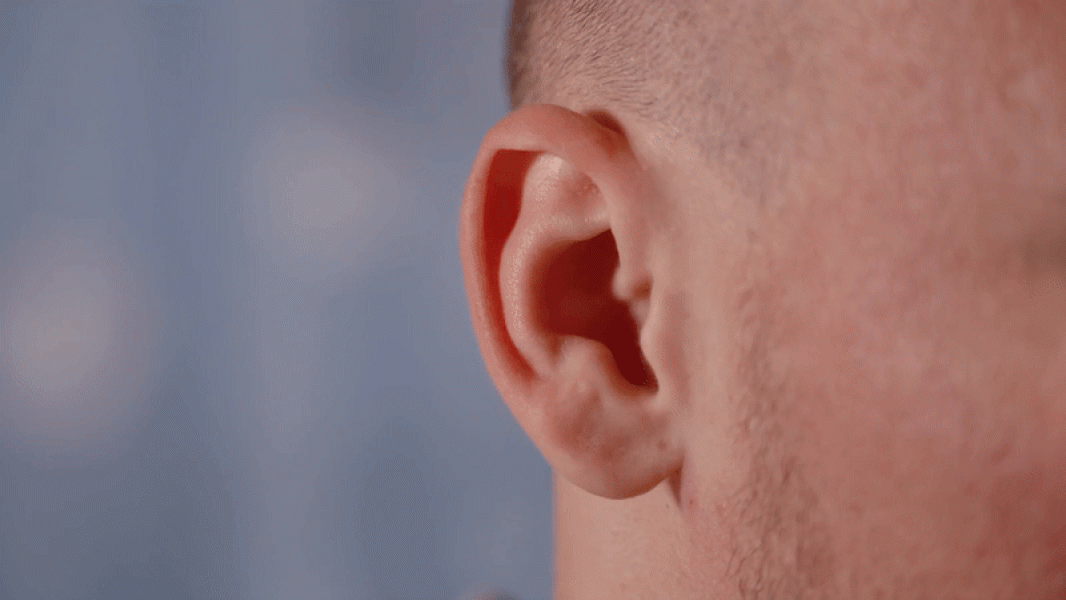
The muscles that allow modern humans to move their ears likely played a more important role in our evolutionary ancestors. (Photo by Khmelyuk/Getty Images)
A new study has shown that small muscles that allow people to move their ears without realizing it are activated when we try to isolate one sound from a background noise.
Consider how cats, dogs, and some primates wiggle their ears in response to new sound cues. This instinctive movement isn't just for show; it helps direct sound to the animals' eardrums, improving their ability to detect and process noise.
Recent research from the University of Saarland in Germany has shown that humans also move their ears in response to sound — at least to some extent. When we strain to hear someone speak in a noisy environment, for example, the small muscles in our outer ears known as the superior auricularis muscles are activated, likely in an attempt to improve our hearing sensitivity. However, because this muscle is small, it probably doesn’t have a significant effect on our hearing.
Now, building on previous research, scientists at Saarland University have conducted a new study, published Jan. 31 in the journal Frontiers in Neuroscience, to take a closer look at how the superior auricular muscle responds when people strain to hear. They believe the research could have practical implications for improving hearing aid technology in the future.
The remains of our ancestors
Although the ear muscles of modern humans are small and underdeveloped, our distant ancestors likely had the ability to move their ears back and forth, improving hearing and picking up sounds more effectively. Some people can still wiggle their ears at will, but these muscles are considered “vestigial”—evolutionary remnants that are of little use today.
However, the researchers behind the new study wonder whether these muscles could ever prove useful for hearing aid technology. One potential avenue is the integration of artificial intelligence that can record and interpret muscle movements.
“If the superior auricular muscles that lift the ears are activated, the hearing aid will know that the user is making a significant effort to hear and understand something,” study co-author Stephen Hackley, a researcher at the University of Missouri, told Live Science in an email. “The hearing aid will then increase the sound level for sounds coming from that direction,” Hackley suggested.
To study these small ear muscles in more detail, Hackley and his colleagues recruited 20 participants with normal hearing and attached electrodes to their skulls to monitor electrical activity in the superior and posterior auricular muscles, which sit above and behind the ears, respectively.
Participants sat in a soundproof room with their heads restrained to prevent movement and listened to an audiobook while a distracting podcast played simultaneously. These sounds came from speakers positioned either in front or behind the participants.
Participants completed 12 five-minute sessions of the experiment, each at one of three difficulty levels: easy, medium, or hard. At the easiest level, the audiobook stood out from the podcast due to its volume and clarity, making it much easier to focus. However, as the difficulty increased, the podcasts became louder and took on a tone similar to the audiobook, making it more difficult, though not impossible, for participants to focus on the audiobook.
Based on the electrode data, the researchers noted that when sounds came from behind the participants, their posterior ear muscles were more active than when sounds came from directly in front of them. This reflex may be a vestigial trait that once helped our ancestors detect sounds outside their line of sight, the researchers suggested.
At the same time, the activity of the upper ear muscles did not depend on the direction of the sound. But as the listening task became more difficult, these muscles became significantly more active. The authors of the study suggested that the activity of the upper ear muscles correlates with listening effort, that is, with how hard a person consciously works to hear. However, other experts expressed caution in interpreting the results.
“I’m not entirely sure I can draw that conclusion,” Matthew Winn, a researcher at the University of Minnesota who was not involved in the study, told Live Science in an email. “Rather, the response may reflect arousal or noise frustration that ‘happens to you,’ rather than the listening effort you choose to exert in a given situation,” he suggested. “Arousal” in this context refers to a state of heightened alertness or responsiveness to a sound.
Does this increased muscle activity help modern humans hear better? Probably not.
“Movements at
Sourse: www.livescience.com





